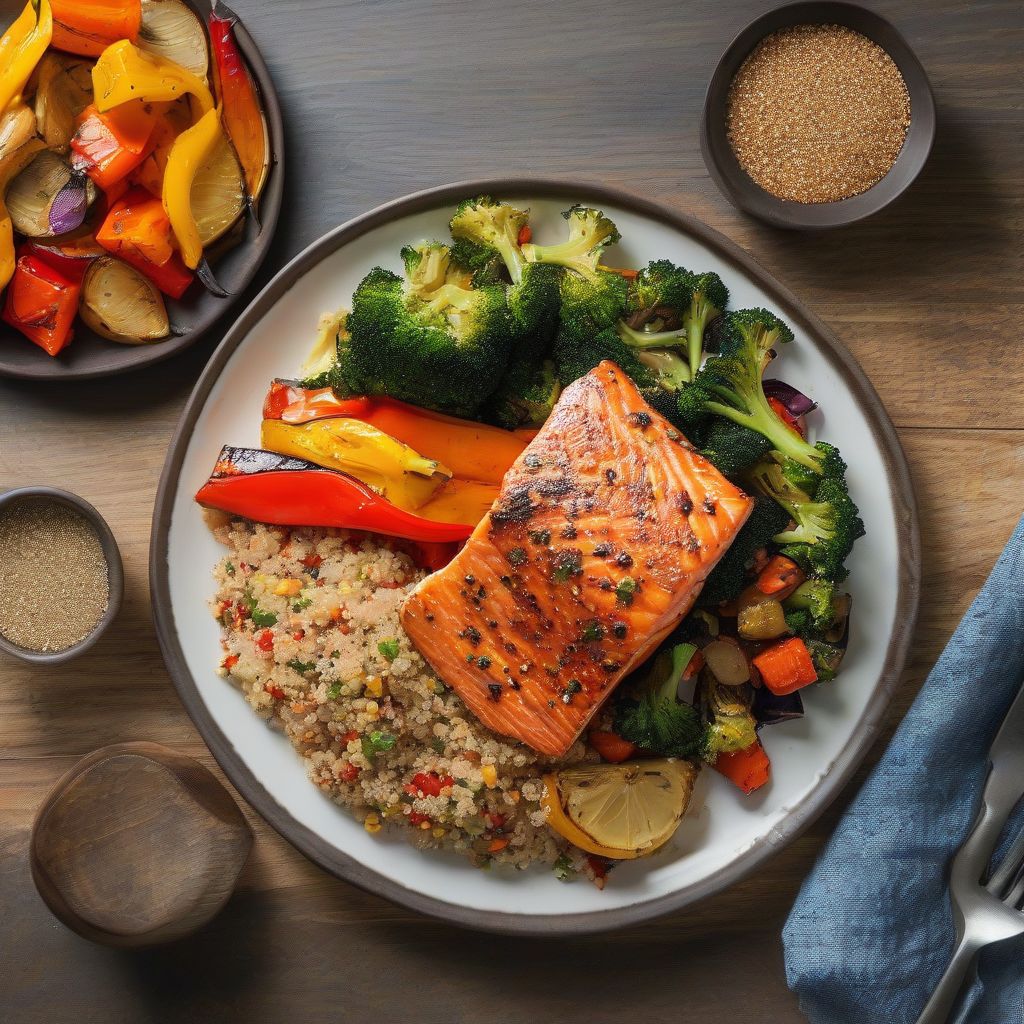Do you dream of effortlessly whipping up nutritious and delicious meals? Creating balanced meals with whole foods doesn’t have to be a daunting task. With a little know-how and some simple strategies, you can nourish your body and tantalize your taste buds without spending hours in the kitchen. Let’s dive into the world of whole foods and discover how to create balanced meals that fuel your well-being.
Understanding the Power of Whole Foods
Whole foods are foods that are unprocessed or minimally processed, close to their natural state. Think vibrant fruits and vegetables, whole grains, lean proteins, and healthy fats. These nutritional powerhouses are packed with vitamins, minerals, antioxidants, and fiber, all essential for optimal health. Choosing whole foods over processed options can significantly impact your energy levels, weight management, and overall well-being.
Building a Balanced Plate: The Foundational Four
The key to creating balanced meals lies in understanding the foundational four food groups:
1. Lean Protein: The Building Blocks
Protein is essential for building and repairing tissues, supporting immune function, and maintaining healthy hair and nails. Opt for lean protein sources like chicken breast, fish, beans, lentils, tofu, and eggs. A serving of protein should roughly be the size of your palm.
2. Whole Grains: Sustained Energy
Whole grains provide sustained energy and are rich in fiber, which aids digestion and promotes satiety. Choose whole grains like brown rice, quinoa, oats, whole-wheat bread, and whole-wheat pasta over refined grains. Aim for a portion size equivalent to your clenched fist.
3. Fruits and Vegetables: Nature’s Vitamins
Fruits and vegetables are bursting with vitamins, minerals, and antioxidants that protect your cells from damage and boost your immune system. Fill half your plate with a colorful array of fruits and vegetables to ensure you’re getting a wide range of nutrients.
4. Healthy Fats: Essential for Brain Health
Healthy fats are crucial for brain function, hormone production, and nutrient absorption. Include sources like avocados, nuts, seeds, olive oil, and fatty fish in your meals. A serving of healthy fats should be about the size of your thumb.
Practical Tips for Creating Balanced Meals
Now that you understand the foundational four, let’s explore some practical tips for creating balanced meals with whole foods:
Meal Prepping: Your Secret Weapon
Meal prepping is a game-changer for busy individuals. Set aside a few hours each week to prepare ingredients or entire meals in advance. This will save you time and ensure you have healthy options readily available. You can find helpful meal prepping tips and recipes on my blog, such as “How to Build a Healthy Meal Plan from Scratch”.
Embrace Variety: Keep Things Interesting
Don’t be afraid to experiment with different flavors and cuisines. Variety not only keeps your taste buds happy but also ensures you’re getting a diverse range of nutrients.
Listen to Your Body: Intuitive Eating
Pay attention to your body’s hunger and fullness cues. Eat when you’re hungry and stop when you’re satisfied. This mindful approach to eating can help you maintain a healthy weight and improve your relationship with food.
Family-Friendly Options: Get Everyone Involved
Getting the whole family on board with healthy eating can be a challenge. Check out my blog post on “Family-Friendly Healthy Recipes Even Kids Will Love” for some delicious and nutritious meal ideas that everyone will enjoy.
Real-World Examples: Putting it All Together
Here are some examples of balanced meals using whole foods:
- Breakfast: Oatmeal with berries, nuts, and a sprinkle of chia seeds.
- Lunch: Salad with grilled chicken or fish, mixed greens, and a variety of vegetables.
- Dinner: Salmon baked with roasted vegetables and quinoa.
- Snacks: Apple slices with almond butter or a handful of mixed nuts.
Addressing Common Concerns and Queries
Many people worry that eating whole foods is expensive and time-consuming. However, with a little planning and smart shopping, you can create balanced meals on a budget. Look for seasonal produce, buy in bulk when possible, and utilize leftovers creatively. Remember, investing in your health is an investment in your future. As Hippocrates wisely said, “Let food be thy medicine and medicine be thy food.”
 Balanced Meal with Whole Foods
Balanced Meal with Whole Foods
Conclusion: Embracing a Whole Foods Lifestyle
Creating balanced meals with whole foods is a journey, not a destination. Embrace the process, experiment with new recipes, and listen to your body. By focusing on the foundational four food groups and incorporating the practical tips discussed, you can nourish your body, boost your energy levels, and achieve your health goals. Remember, small changes can make a big difference. What step will you take today to incorporate more whole foods into your diet? Share your thoughts and experiences in the comments below!



